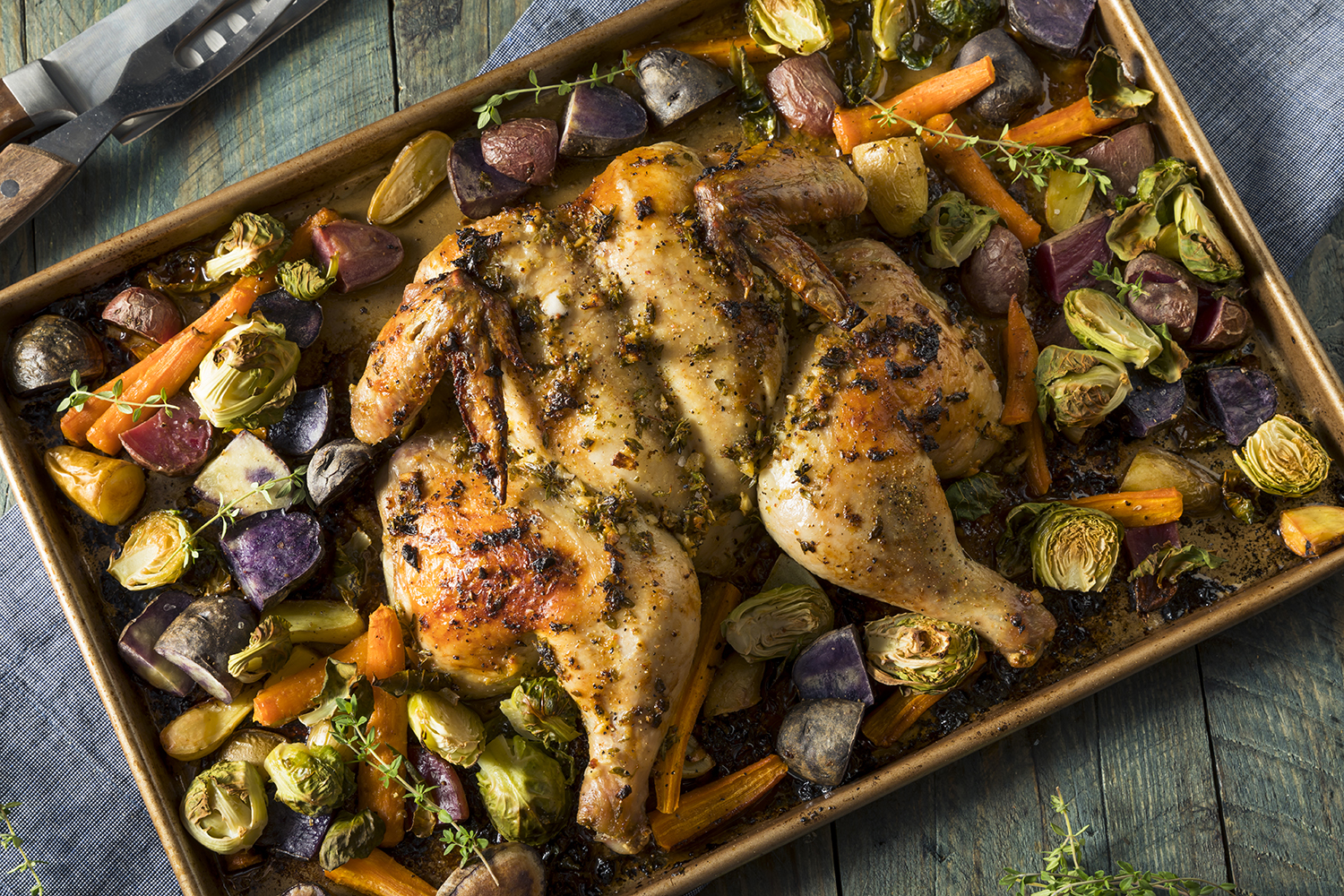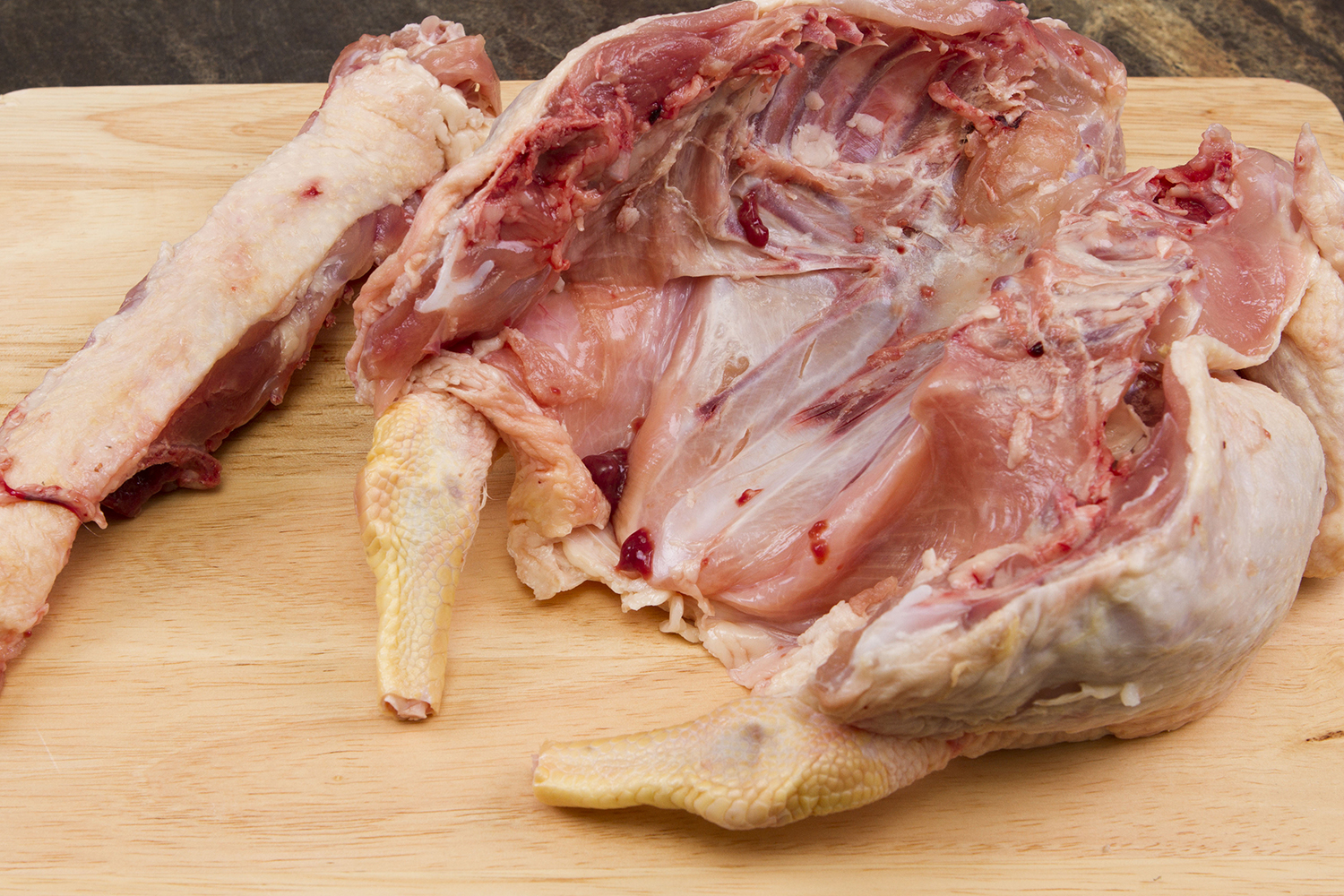For most people here in the States, it’s been less than a week of quarantines and isolations. By now, you’ve probably gone to the store and stocked up on things. But what happens when you get there and they don’t have the pre-cut chicken pieces and only the whole birds? Well, you make lemonade out of lemons (figuratively) and cook that bird up. Don’t know how? We’ve got one word for you: spatchcocking.
The name — and if you can say it without giggling then bravo for you — dates back to the 18th century and was a shortened version of the phrase “dispatch the cock.” (Get your laughs out now. We’ll wait.) The first references to the phrase come to us, according to scholars, from Irish cookbooks. Now, when we talk about spatchcocking, we are talking about splitting the bird down the middle so that it lays flat in the roasting pan.
When done right (and yes, it really is easy), spatchcocking can help you prepare an entire roasted chicken in about a half hour. Not only is this technique swifter than traditional roasting, but it also yields a juicy, flavorful, evenly cooked bird.
This technique does require the removal of a chicken’s backbone. It’s not exactly an impersonal cooking experience, but we believe in you.
Spatchcock Chicken Recipe
Ingredients:
- 1 whole chicken
- 1 lb potatoes, cubed
- 2 carrots, coined
- 1 onion, sliced
- 2 tbsp vegetable oil
- 1 tsp garlic powder
- 1 tsp onion powder
- Salt, to taste
- Black pepper, to taste
Method:
- Preheat your oven to 450 degrees Fahrenheit.
- Places the diced vegetables in the bottom of a roasting pan. Toss with oil, salt, and pepper.
- Lay the chicken breast-side down and using kitchen shears (you can use a knife, but shears make the process much easier), cut out the backbone out of the chicken. (You can save the backbone for making stock if you wish).
- Open the chicken up so that you can see the ribs and sternum. Take hold of the chicken and press down to break the sternum.
- Place the bird skin side up on top of the vegetables and season as desired. Place in oven, cooking for about 40 minutes, or until the temperature in the thigh reads 165 degrees Fahrenheit.
- Let rest five minutes before serving.
Looking for other things to cook in your oven? Why not try your hand at steak?
Article originally published by Steven John on November 13, 2016. Last updated by Sam Slaughter.





